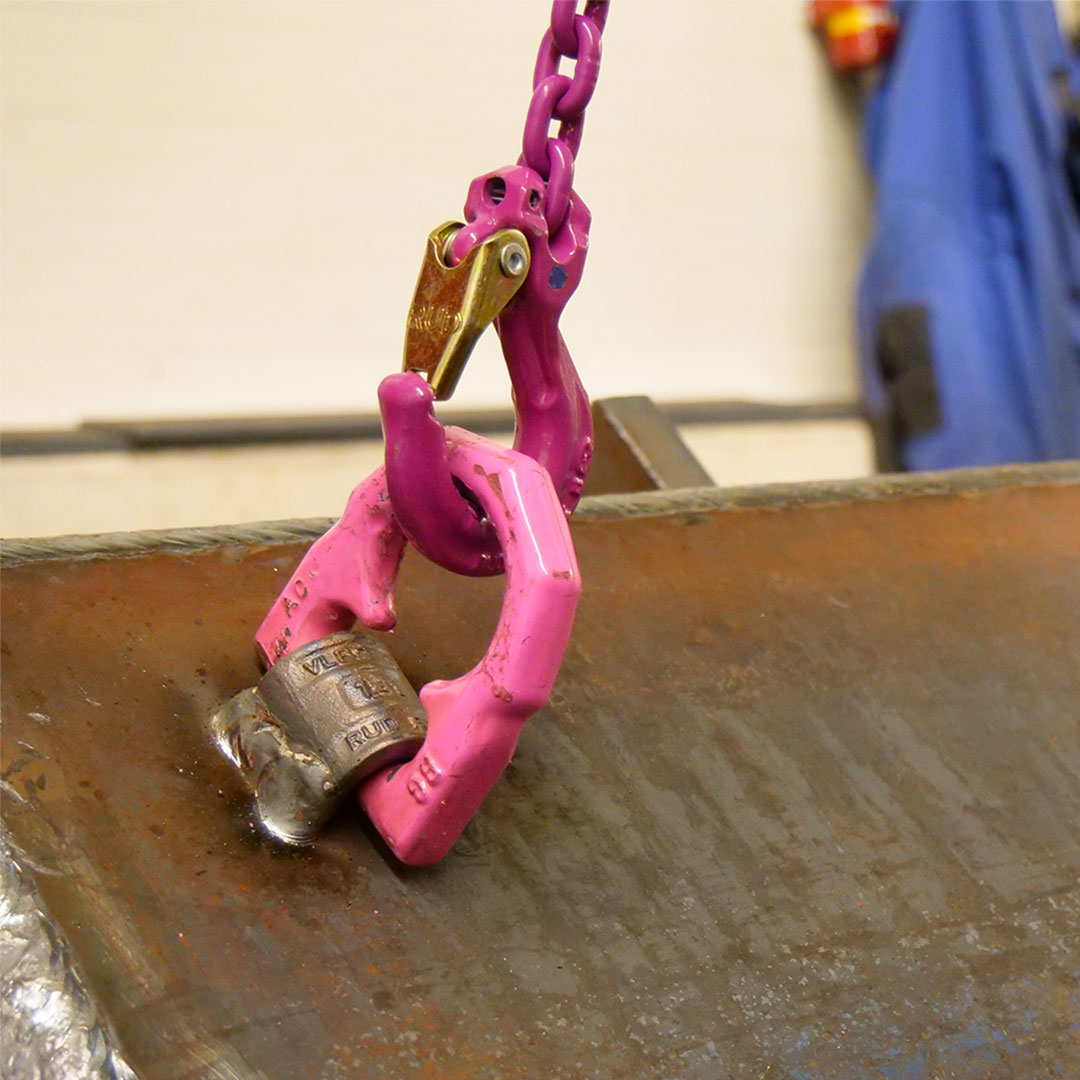What is a lifting point?
The unique variety from RUD.
A lifting point is the connection between the lifting means and the load. It connects the loaded goods with the lifting gear both during lifting and rotation as well as during turning and movement of loads. Lifting points are ring bolts, eyebolts, flanges etc. which the sling is attached to using hooks, shackles or other connection elements.
RUD lifting points have stood for top quality, ergonomics and safety in lifting technology and load securing for more than 35 years. More than 700 tested boltable and weldable lifting point variants in load ranges up to 250 t meet maximum requirements in all areas of application in combination with the unique variety of application of our ICE and VIP chain systems.
Important for design engineers.
Loads are lifted using lifting means (chains, cables or synthetic slings) or lashed on the truck during transport. The different numbers of legs and their angles of inclination result in a multitude of loads and stress directions in the lifting or lashing points. In particular, the WLL of lifting points changes depending on symmetrical or unsymmetrical loads. The design of lifting points can be calculated using certain equations.
1-leg lifting process: load factor 1 (right-hand figure). The load can rotate, the lifting point twists open. Risk of falling! Choose a lifting point with ball bearing.
Asymmetrical loads.
Caution: With an asymmetrical load and 2 lifting points one lifting point must bear the whole load (see figure). Load factor 1 (max. permitted angle of inclination taken into account).
Good Points / Bad Points
Bad points.
Wrong lifting point, too small, poorly positioned, insufficiently fastened, no alignment in the force direction – in some circumstances with broken bolt: Many mistakes can occur when lifting or turning loads. These genuine pictures from practice show this.
Good points.
Modern and tested lifting points from RUD increase the working safety and reduce handling times. They correspond to Machinery Directive 2006/42/EU, provide safety against breaks in all loading directions and are 100% tear tested and test loaded. Genuine RUD good points.
Why PINK? – non-mix-up in pink!
Modern and tested lifting points increase health and safety at work and reduce handling times. Use tested lifting points from RUD “Made in Germany”!
[EN] Gird: 2-Columns Media Left | Marked with a special colour
Lifting points have to be marked with a special colour – in accordance with the basic principles for their testing and certification. For this reason, the RUD lifting points were painted the usual red more than 30 years ago in line with the standard used for the chain quality at the time.
20 years ago, RUD then launched the revolutionary “VIP” chain range in Grade 10 on the market – in fluorescent pink powder coating. The special feature of this paint: it can be used as an overheating indicator at the same time. The pink powder coating used in the VIP product range changes its colour at a temperature above 200 °C: from ochre to brown and – at the prohibited temperature of almost 400 °C – to black with blister formation. Thanks to this established system, overheated lifting points can be identified reliably and replaced.
By the way: the former RUD ICE chains of quality class Grade 12 or 120 are powder coated with the shade “ICE-Pink”. This legally protected colouring is used for all lifting points equipped with ICE-BOLT. ICE-Pink also serves as a heat indicator from 200 °C onwards; at 300 °C a black colour display becomes visible as a sign of overheating.



